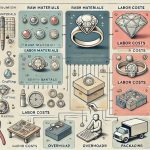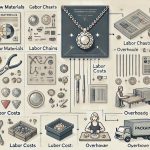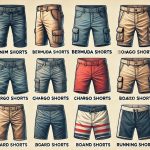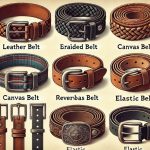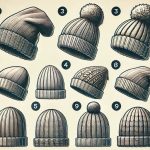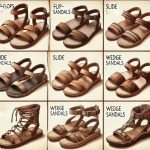Laptops have evolved into versatile devices that cater to a wide array of uses, from personal entertainment to professional productivity. The production cost distribution of a typical laptop can provide insights into the various factors that influence its pricing.
How Laptops are Produced
The production of laptops involves a complex process that includes several stages, from design to final assembly. Here’s a general overview:
- Design and Engineering
- Concept and Design: The process begins with the concept phase, where designers and engineers collaborate to create a laptop that meets market demands. This includes designing the laptop’s aesthetic and selecting the internal components.
- Prototyping: Once the design is finalized, prototypes are created. These prototypes are rigorously tested for performance, durability, and functionality.
- Component Manufacturing
- Processor and Chipsets: The central processing unit (CPU) and other chipsets are produced by semiconductor companies like Intel or AMD. These components are the brain of the laptop.
- Memory (RAM) and Storage: Memory modules and storage devices (HDDs, SSDs) are manufactured, often by specialized companies.
- Display Manufacturing: The LCD or OLED screens are produced, involving a separate, highly technical manufacturing process.
- Motherboard: The motherboard, which houses the CPU, memory, and other components, is manufactured. This process involves assembling multiple tiny components onto a printed circuit board (PCB).
- Battery Production: Lithium-ion batteries are produced to provide the laptop with portable power. Battery cells are assembled into a specific configuration for the laptop.
- Component Assembly
- Chassis Assembly: The laptop’s body or chassis is manufactured, usually from materials like aluminum or plastic. It is designed to house all the internal components securely.
- Assembly Line: The various components, such as the motherboard, processor, RAM, storage, and battery, are assembled into the chassis. Automated machines and human workers collaborate in this stage.
- Cooling System: Heat sinks and cooling fans are installed to manage the heat generated by the processor and other components.
- Software Installation
- Operating System Installation: The operating system (e.g., Windows, macOS, Linux) is installed on the laptop’s storage. This process often includes setting up drivers for the hardware components.
- Quality Assurance Testing: Before a laptop leaves the factory, it undergoes rigorous testing to ensure that all components are functioning correctly and that the system meets performance standards.
- Packaging and Shipping
- Final Assembly and Packaging: The assembled laptops are packaged with accessories like power adapters and manuals. Packaging is designed to protect the laptop during shipping.
- Distribution
Production Cost Distribution
Here’s an overview of how these costs are generally distributed:
- Components (60-70%)
- Processor (CPU): The CPU is a major component and can account for 20-25% of the total production cost.
- Memory (RAM): RAM usually represents about 10-15% of the cost.
- Storage (SSD/HDD): Depending on the capacity and type, storage can take up 10-15% of the cost.
- Display: The screen accounts for around 15-20% of the cost.
- Battery: Typically 5-10% of the total cost.
- Other Components: This includes the motherboard, cooling system, keyboard, touchpad, etc., collectively around 10-15%.
- Labor Costs (10-15%)
- This covers the cost of labor for assembling the laptop, quality control, and other production-related activities.
- Research and Development (R&D) (5-10%)
- These are the costs associated with designing and developing new models and technologies.
- Marketing and Distribution (10-15%)
- These expenses include marketing campaigns, shipping, and distribution.
- Overhead Costs (5-10%)
- This includes administrative expenses, utilities, and other indirect costs.
9 Types of Laptops
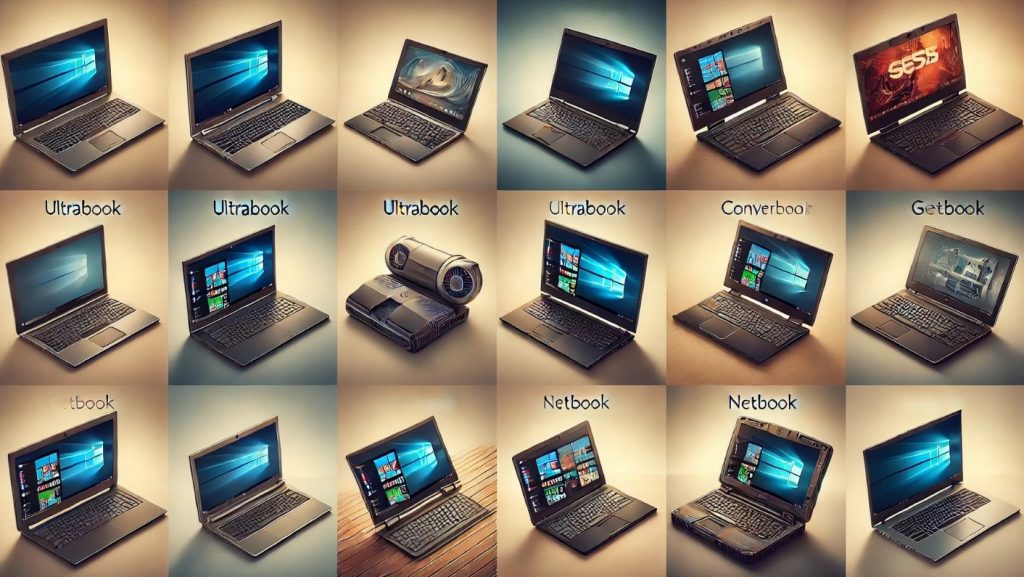
1. Ultrabooks
Description
Ultrabooks are high-end laptops characterized by their thin, lightweight design and powerful performance. They often feature long battery life, fast storage (SSD), and high-resolution displays, making them ideal for professionals on the go.
Popular Brands
| Brand | Established | Location |
|---|---|---|
| Apple (MacBook Air) | 1976 | Cupertino, CA, USA |
| Dell (XPS) | 1984 | Round Rock, TX, USA |
| HP (Spectre) | 1939 | Palo Alto, CA, USA |
| Lenovo (Yoga) | 1984 | Beijing, China |
| ASUS (ZenBook) | 1989 | Taipei, Taiwan |
Averaged Retail Price on Amazon
- Price Range: $1,000 – $2,500
Popularity
Ultrabooks are highly popular among professionals and business users who require a balance of performance and portability. Their sleek design and powerful features make them a preferred choice for those who travel frequently and need reliable performance on the go.
Production Details
- White Label Production Cost in China: $400 – $800 per unit
- Product Weight: 1-1.5 kg
- Minimum Order Quantity (MOQ): 500 units
- Major Materials: Aluminum or magnesium alloy body, lithium-polymer battery, SSD storage, high-resolution LCD or OLED displays
2. Gaming Laptops
Description
Gaming laptops are designed to handle high-performance gaming with powerful GPUs, high-refresh-rate displays, and advanced cooling systems. They often feature customizable RGB lighting and robust build quality.
Popular Brands
| Brand | Established | Location |
|---|---|---|
| Alienware (Dell) | 1996 | Miami, FL, USA |
| Razer Blade | 2005 | San Francisco, CA, USA |
| ASUS ROG | 1989 | Taipei, Taiwan |
| MSI (Leopard) | 1986 | New Taipei, Taiwan |
| Acer Predator | 1976 | New Taipei, Taiwan |
Averaged Retail Price on Amazon
- Price Range: $1,200 – $3,000
Popularity
Gaming laptops are extremely popular among gamers who require portable systems capable of running demanding games. They are also favored by content creators and professionals who need powerful hardware for tasks such as video editing and 3D rendering.
Production Details
- White Label Production Cost in China: $600 – $1,200 per unit
- Product Weight: 2.5-4 kg
- Minimum Order Quantity (MOQ): 500 units
- Major Materials: High-performance CPUs and GPUs, metal and plastic body, advanced cooling systems, RGB backlit keyboards, high-refresh-rate IPS or OLED displays
3. Business Laptops
Description
Business laptops are built for reliability, security, and productivity. They often come with features like biometric security, extended battery life, and robust build quality. These laptops are designed to handle multitasking and run business software efficiently.
Popular Brands
| Brand | Established | Location |
|---|---|---|
| Lenovo ThinkPad | 1984 | Beijing, China |
| HP EliteBook | 1939 | Palo Alto, CA, USA |
| Dell Latitude | 1984 | Round Rock, TX, USA |
| Microsoft Surface | 1975 | Redmond, WA, USA |
| ASUS ExpertBook | 1989 | Taipei, Taiwan |
Averaged Retail Price on Amazon
- Price Range: $800 – $1,800
Popularity
Business laptops are highly popular in corporate environments due to their durability, security features, and performance. They are preferred by professionals who need reliable machines for office work, presentations, and business travel.
Production Details
- White Label Production Cost in China: $300 – $600 per unit
- Product Weight: 1.5-2.5 kg
- Minimum Order Quantity (MOQ): 500 units
- Major Materials: Magnesium alloy or carbon fiber body, high-capacity batteries, SSD storage, security features like TPM and biometric sensors
4. 2-in-1 Laptops
Description
2-in-1 laptops, also known as convertible laptops, can function as both a laptop and a tablet. They feature touchscreens and often come with a stylus for added functionality. These devices are versatile, making them suitable for a variety of tasks from creative work to regular computing.
Popular Brands
| Brand | Established | Location |
|---|---|---|
| Microsoft Surface Pro | 1975 | Redmond, WA, USA |
| Lenovo Yoga | 1984 | Beijing, China |
| HP Spectre x360 | 1939 | Palo Alto, CA, USA |
| Dell Inspiron 2-in-1 | 1984 | Round Rock, TX, USA |
| ASUS Chromebook Flip | 1989 | Taipei, Taiwan |
Averaged Retail Price on Amazon
- Price Range: $700 – $1,500
Popularity
2-in-1 laptops are popular among users who value flexibility and convenience. They are favored by students, creative professionals, and anyone who benefits from the ability to switch between a traditional laptop and a tablet mode.
Production Details
- White Label Production Cost in China: $350 – $700 per unit
- Product Weight: 1-2 kg
- Minimum Order Quantity (MOQ): 500 units
- Major Materials: Aluminum or plastic body, touchscreens, flexible hinges, lithium-polymer batteries
5. Chromebooks
Description
Chromebooks run on Google’s Chrome OS and are designed to be simple, fast, and secure. They rely heavily on cloud storage and online applications, making them an affordable option for basic computing tasks such as browsing the web, using office applications, and streaming media.
Popular Brands
| Brand | Established | Location |
|---|---|---|
| Google Pixelbook | 1998 | Mountain View, CA, USA |
| Acer Chromebook | 1976 | New Taipei, Taiwan |
| ASUS Chromebook | 1989 | Taipei, Taiwan |
| HP Chromebook | 1939 | Palo Alto, CA, USA |
| Lenovo Chromebook | 1984 | Beijing, China |
Averaged Retail Price on Amazon
- Price Range: $200 – $600
Popularity
Chromebooks are very popular in educational settings and among users who need a low-cost, easy-to-use laptop. Their simplicity and integration with Google services make them a preferred choice for students and casual users.
Production Details
- White Label Production Cost in China: $100 – $250 per unit
- Product Weight: 1-1.5 kg
- Minimum Order Quantity (MOQ): 1,000 units
- Major Materials: Plastic or aluminum body, eMMC or SSD storage, lithium-ion batteries
6. Workstation Laptops
Description
Workstation laptops are high-performance machines designed for professional use in fields such as engineering, architecture, video editing, and 3D rendering. They feature powerful CPUs, large amounts of RAM, high-end GPUs, and often come with professional-grade displays.
Popular Brands
| Brand | Established | Location |
|---|---|---|
| Dell Precision | 1984 | Round Rock, TX, USA |
| HP ZBook | 1939 | Palo Alto, CA, USA |
| Lenovo ThinkPad P Series | 1984 | Beijing, China |
| MSI Workstation | 1986 | New Taipei, Taiwan |
| ASUS ProArt StudioBook | 1989 | Taipei, Taiwan |
Averaged Retail Price on Amazon
- Price Range: $1,500 – $4,000
Popularity
Workstation laptops are popular among professionals who need portable devices with the power to handle demanding applications. They are essential tools in industries such as media production, engineering, and scientific research.
Production Details
- White Label Production Cost in China: $800 – $1,600 per unit
- Product Weight: 2.5-4 kg
- Minimum Order Quantity (MOQ): 500 units
- Major Materials: High-performance CPUs and GPUs, robust cooling systems, metal chassis, professional-grade displays
7. Budget Laptops
Description
Budget laptops are designed to be affordable while providing the necessary features for everyday computing tasks. They are often equipped with entry-level processors, moderate amounts of RAM, and sufficient storage for basic use.
Popular Brands
| Brand | Established | Location |
|---|---|---|
| Acer Aspire | 1976 | New Taipei, Taiwan |
| Lenovo IdeaPad | 1984 | Beijing, China |
| HP Pavilion | 1939 | Palo Alto, CA, USA |
| Dell Inspiron | 1984 | Round Rock, TX, USA |
| ASUS VivoBook | 1989 | Taipei, Taiwan |
Averaged Retail Price on Amazon
- Price Range: $300 – $600
Popularity
Budget laptops are extremely popular among students, casual users, and anyone looking for an inexpensive device for basic tasks such as web browsing, office applications, and media consumption.
Production Details
- White Label Production Cost in China: $150 – $300 per unit
- Product Weight: 1.5-2.5 kg
- Minimum Order Quantity (MOQ): 1,000 units
- Major Materials: Plastic or metal body, HDD or eMMC storage, lithium-ion batteries
8. Student Laptops
Description
Student laptops are tailored to meet the needs of students. They are typically lightweight, affordable, and come with features such as long battery life, durability, and adequate performance for educational software and multitasking.
Popular Brands
| Brand | Established | Location |
|---|---|---|
| HP Chromebook | 1939 | Palo Alto, CA, USA |
| Dell Inspiron | 1984 | Round Rock, TX, USA |
| Acer Chromebook | 1976 | New Taipei, Taiwan |
| Lenovo IdeaPad | 1984 | Beijing, China |
| ASUS VivoBook | 1989 | Taipei, Taiwan |
Averaged Retail Price on Amazon
- Price Range: $300 – $700
Popularity
Student laptops are highly popular in educational institutions and among students of all ages. Their affordability, coupled with the necessary features for academic tasks, makes them a top choice for students.
Production Details
- White Label Production Cost in China: $150 – $350 per unit
- Product Weight: 1.2-2 kg
- Minimum Order Quantity (MOQ): 1,000 units
- Major Materials: Plastic or lightweight metal body, SSD or eMMC storage, long-lasting lithium-ion batteries
9. Thin and Light Laptops
Description
Thin and light laptops emphasize portability without compromising performance. They are designed to be sleek, lightweight, and often feature high-end materials such as aluminum or magnesium alloy bodies. These laptops are ideal for users who prioritize mobility.
Popular Brands
| Brand | Established | Location |
|---|---|---|
| Apple MacBook Air | 1976 | Cupertino, CA, USA |
| Dell XPS | 1984 | Round Rock, TX, USA |
| HP Spectre | 1939 | Palo Alto, CA, USA |
| ASUS ZenBook | 1989 | Taipei, Taiwan |
| Lenovo Yoga | 1984 | Beijing, China |
Averaged Retail Price on Amazon
- Price Range: $900 – $2,000
Popularity
Thin and light laptops are popular among professionals, students, and frequent travelers. Their combination of portability and performance makes them suitable for a wide range of uses, from business meetings to casual browsing.
Production Details
- White Label Production Cost in China: $400 – $800 per unit
- Product Weight: 1-1.5 kg
- Minimum Order Quantity (MOQ): 500 units
- Major Materials: Aluminum or magnesium alloy body, SSD storage, high-resolution displays, lightweight lithium-polymer batteries


